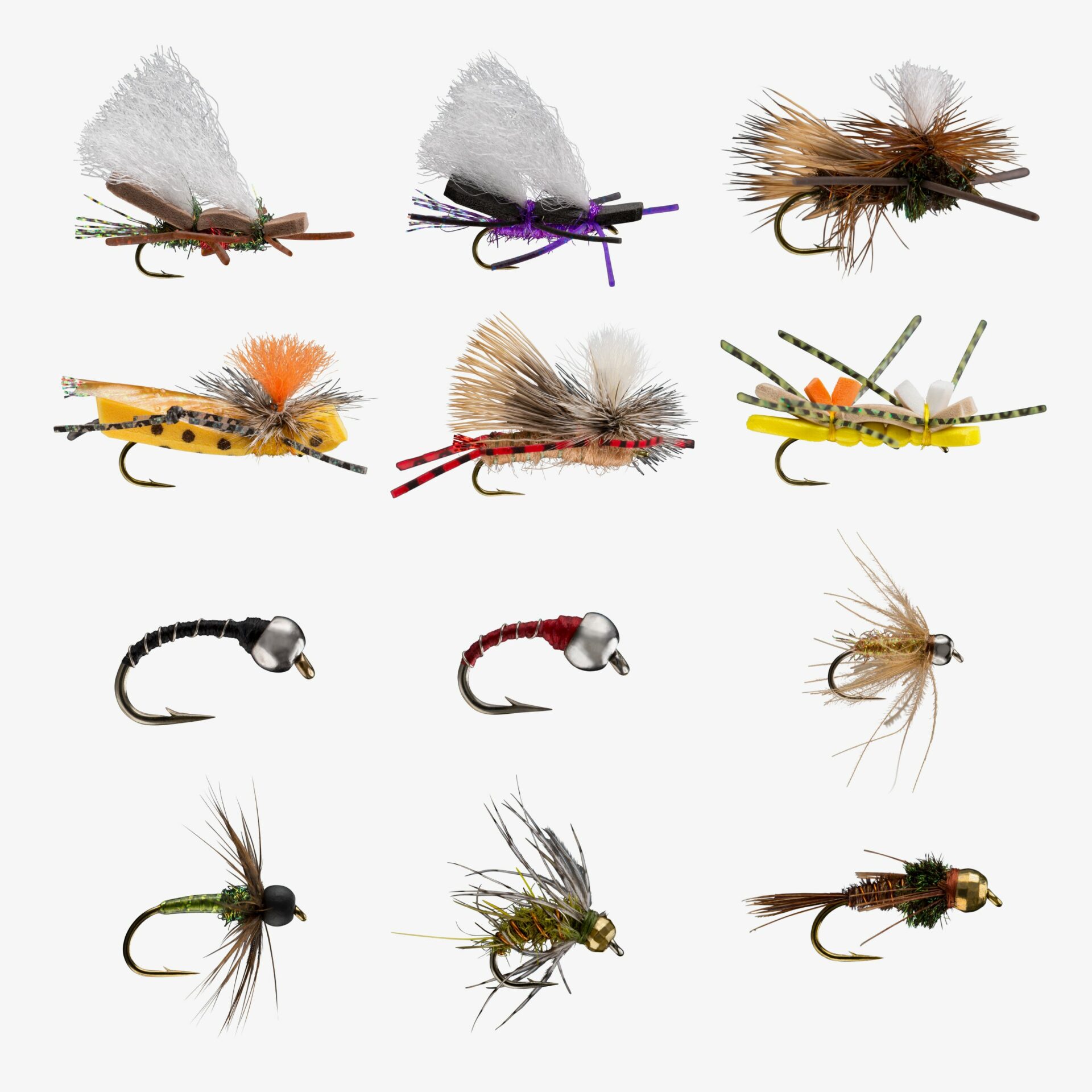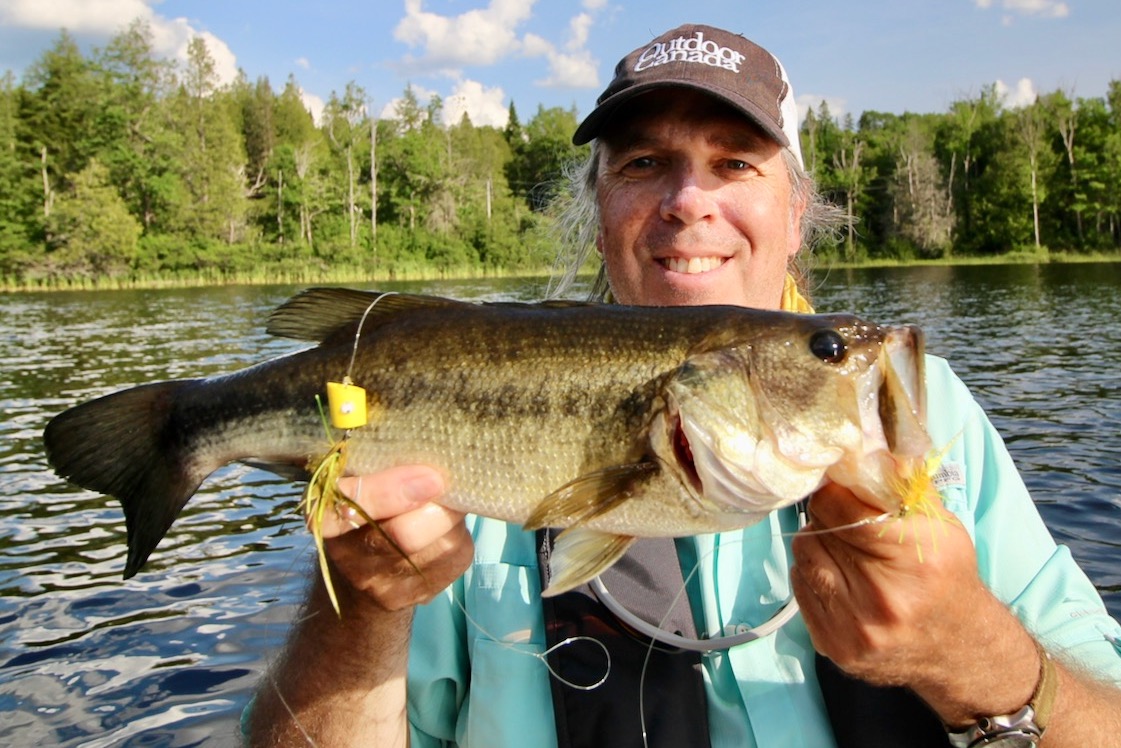DOUBLE DUTY
Up your odds of figuring out the fish by tying on a two-fly rig
Advertisement

HOPPER-DROPPER
One of the best-known double-fly rigs consists of a high-floating dry fly with a wet fly or nymph trailing behind and below it on a dropper. Bushy grasshopper flies are a common choice for the dry fly, hence the name “hopper-dropper.” It’s a clever and versatile rig. The dry fly is a legitimate target in its own right, but it also serves as a visual cue to help you get a drag-free drift on your nymph, and as an indicator for subsurface strikes. You can use it pretty much anywhere you’d fish a dry fly, but I like it as a searching rig on relatively featureless water, where fish could be holding anywhere.
The hopper-dropper is typically considered a trout rig, but it’s also one of my favourites for bass and panfish in both rivers and lakes. In those cases, I use a foam or deer-hair bass bug (sized for the species), usually with a wiggly and seductive subsurface fly behind it. With trout, double hook-ups on the hopper-dropper are rare, but not so with bass, especially smallmouths. They are such competitive feeders that when one eats, the others also get fired up, making for a sporty few minutes when you get two fish on the line at once.
Advertisement

